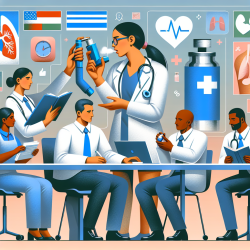Introduction
In the realm of healthcare, health literacy is a critical component that determines how well individuals can access, understand, and utilize health information. The research article "An Overview of Self-Administered Health Literacy Instruments" provides a comprehensive analysis of various self-administered health literacy tools. This blog aims to explore how practitioners, especially those involved in online therapy services like TinyEYE, can leverage these findings to enhance their practice and improve outcomes for children.
The Importance of Health Literacy
Health literacy is defined as the ability to obtain, process, and understand basic health information and services needed to make appropriate health decisions. According to the research, a significant portion of the population has low health literacy, which can adversely affect health outcomes. For practitioners working with children, understanding and improving health literacy can be pivotal in fostering better health and educational outcomes.
Insights from the Research
The study reviewed 35 self-administered health literacy instruments, highlighting their validity and administration characteristics. Notably, these instruments are divided into two categories:
- General Health Literacy Measures: These assess overall health literacy and are suitable for broad applications.
- Condition- or Context-Specific Measures: These focus on specific health areas, such as diabetes or oral health, providing more targeted insights.
Most of these instruments were developed in the United States, and about half have adequate validity. The research suggests a need to focus on understanding health literacy as a construct to improve measurement tools further.
Implementing Research Outcomes in Practice
Practitioners can utilize the findings from this research in several ways:
- Select Appropriate Tools: Choose validated instruments that align with the specific needs of your practice and the population you serve. For instance, if you are working with children with specific health conditions, consider using condition-specific measures.
- Enhance Assessment Processes: Incorporate self-administered tools into your assessment protocols to efficiently gauge health literacy levels without placing additional burdens on staff.
- Focus on Education: Use insights from health literacy assessments to tailor educational interventions, ensuring that information is accessible and understandable for children and their families.
Encouraging Further Research
The study highlights gaps in current health literacy measurement tools, particularly in their sensitivity to change over time. Practitioners are encouraged to engage in further research to explore these gaps and contribute to the development of more dynamic and responsive tools. By doing so, they can play a crucial role in advancing the field and improving health literacy outcomes.
Conclusion
Health literacy is a vital component of effective healthcare delivery, particularly in pediatric settings. By leveraging the insights from "An Overview of Self-Administered Health Literacy Instruments," practitioners can enhance their assessment processes and educational interventions, ultimately leading to better outcomes for children. To delve deeper into the original research, please follow this link: An Overview of Self-Administered Health Literacy Instruments.










